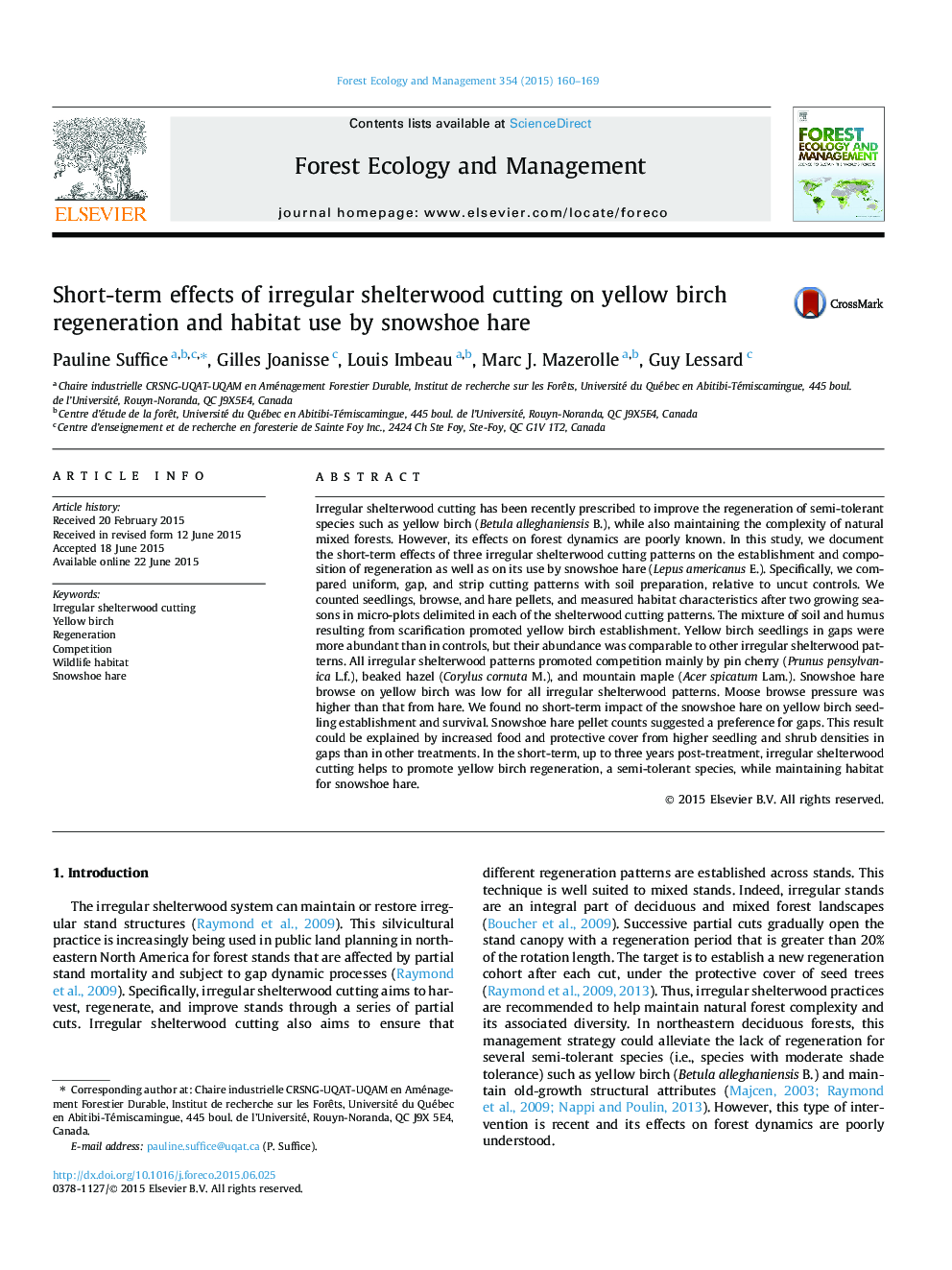| کد مقاله | کد نشریه | سال انتشار | مقاله انگلیسی | نسخه تمام متن |
|---|---|---|---|---|
| 86146 | 159168 | 2015 | 10 صفحه PDF | دانلود رایگان |
• Irregular shelterwood cutting (ISC) promotes yellow birch regeneration.
• Substrates with a mixture of soil and humus favored yellow birch establishment.
• ISC maintains habitat for the snowshoe hare, especially in gaps.
• Snowshoe hare have no short-term impact on yellow birch seedling establishment.
Irregular shelterwood cutting has been recently prescribed to improve the regeneration of semi-tolerant species such as yellow birch (Betula alleghaniensis B.), while also maintaining the complexity of natural mixed forests. However, its effects on forest dynamics are poorly known. In this study, we document the short-term effects of three irregular shelterwood cutting patterns on the establishment and composition of regeneration as well as on its use by snowshoe hare (Lepus americanus E.). Specifically, we compared uniform, gap, and strip cutting patterns with soil preparation, relative to uncut controls. We counted seedlings, browse, and hare pellets, and measured habitat characteristics after two growing seasons in micro-plots delimited in each of the shelterwood cutting patterns. The mixture of soil and humus resulting from scarification promoted yellow birch establishment. Yellow birch seedlings in gaps were more abundant than in controls, but their abundance was comparable to other irregular shelterwood patterns. All irregular shelterwood patterns promoted competition mainly by pin cherry (Prunus pensylvanica L.f.), beaked hazel (Corylus cornuta M.), and mountain maple (Acer spicatum Lam.). Snowshoe hare browse on yellow birch was low for all irregular shelterwood patterns. Moose browse pressure was higher than that from hare. We found no short-term impact of the snowshoe hare on yellow birch seedling establishment and survival. Snowshoe hare pellet counts suggested a preference for gaps. This result could be explained by increased food and protective cover from higher seedling and shrub densities in gaps than in other treatments. In the short-term, up to three years post-treatment, irregular shelterwood cutting helps to promote yellow birch regeneration, a semi-tolerant species, while maintaining habitat for snowshoe hare.
Journal: Forest Ecology and Management - Volume 354, 15 October 2015, Pages 160–169
